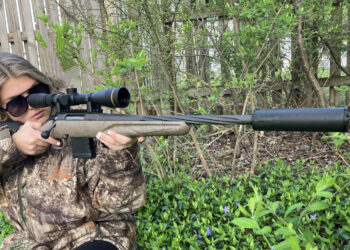By Jeffrey Folloder
ITAR Compliance a Nightmare for Firearms Manufacturers
One of the most intense NFA discussions over the past many years has surrounded the topic of the State Department implementation of the International Trafficking in Arms Regulations (ITAR). This bit of legalese has been the subject of scorn and hassle for many. To put a fine point on it: State Department required each and every licensed manufacturer of firearms or ammunition, regardless of whether they exported or not, to register and pay at least $2,250 per year. Many manufacturers simply ignored the requirement, though we have diligently warned of the requirement and the penalties for willfully avoiding it.
Then, the State Department started stepping up their enforcement efforts. When manufacturers were brought to heel, they were often politely asked to provide a list of all the manufacturers that they had done business with. A shopping list for the State Department, as it were. It was pointed out that a complete list of every FFL, in every class, was published on the ATF website every month for anyone to download and read. Industry Operations Investigators (IOIs) for ATF began inquiring during site inspections regarding whether the potential or existing licensees had registered with State Department. Many had not and were politely and professionally advised of the requirement. A bit of concern spread like a virus throughout the FFL world. Many licensees that had flown under the radar were now stepping out in to the sunlight.
Those licensees learned that registration for ITAR compliance was anything but easy. Assemble a raft of documents establishing that your enterprise, in fact, existed. Download an instruction sheet on how to submit your payment from a difficult-to-navigate State Department website. Applicants must note that credit cards, check and money orders are not accepted as valid forms of payment of the onerous registration fee. The only methods accepted are automated clearing house (ACH) and something called Fedwire. Applicants will spend hours and sometimes days asking what Fedwire is. Eventually they will learn that Fedwire is just a government name for a normal wire transfer. Go to the bank and arrange for the ACH or wire transfer (usually at some additional expense) and send it off with State’s very precise instructions for what items need to appear in what fields of the payment transaction. Now wait until your bank provides confirmation of funds delivery. Download the application for registration. Fill out that form and save it as an unsigned document. Now sign a printed copy of that document, sign it, scan it and save it as a new document. An applicant will also want to scan and save a copy of the bank’s confirmation of payment because simply entering the transaction confirmation number on the application is not sufficient.
With all of this in hand, go back to the cryptic website and proceed to the ominous DDTC registration portal. You will be walked through the submission process where you will upload all the various bits mentioned above. Assuming that you have done everything correctly, you’ll get a confirmation that your registration submission is complete. Now you wait for what will seem like a very long time to receive a notice that your registration is complete and that you have been assigned your own special State Department DDTC M code number.
Now it is time for the good news and the bad news. The good news is that many firearms-related items are moving from State Department to Commerce Department. Many manufacturers will no longer have to go through the onerous and expensive State Department hassle. There will be simple forms to fill out if one is actually exporting, no annual $2,250 tithe to the fed. That is the good news. The bad news is that the National Firearms Act (NFA) community is unlikely to catch this break. As currently written, the proposed new rules do not provide for machine guns and suppressors to be transferred to Commerce Department purview. If you are an 07/SOT, you are still on the State Department hook.
The NFATCA will continue to work with and support efforts to move all NFA items over to Commerce. International arms trafficking regulations should only apply to those that are actually involved in international transaction. Of course, that makes too much sense. And it is very hard for any government institution to give up an established revenue stream. We keep fighting. Thank you for your continued support. Please sign up and renew at www.nfatca.org.
This article first appeared in Small Arms Review V22N9 (November 2018)










